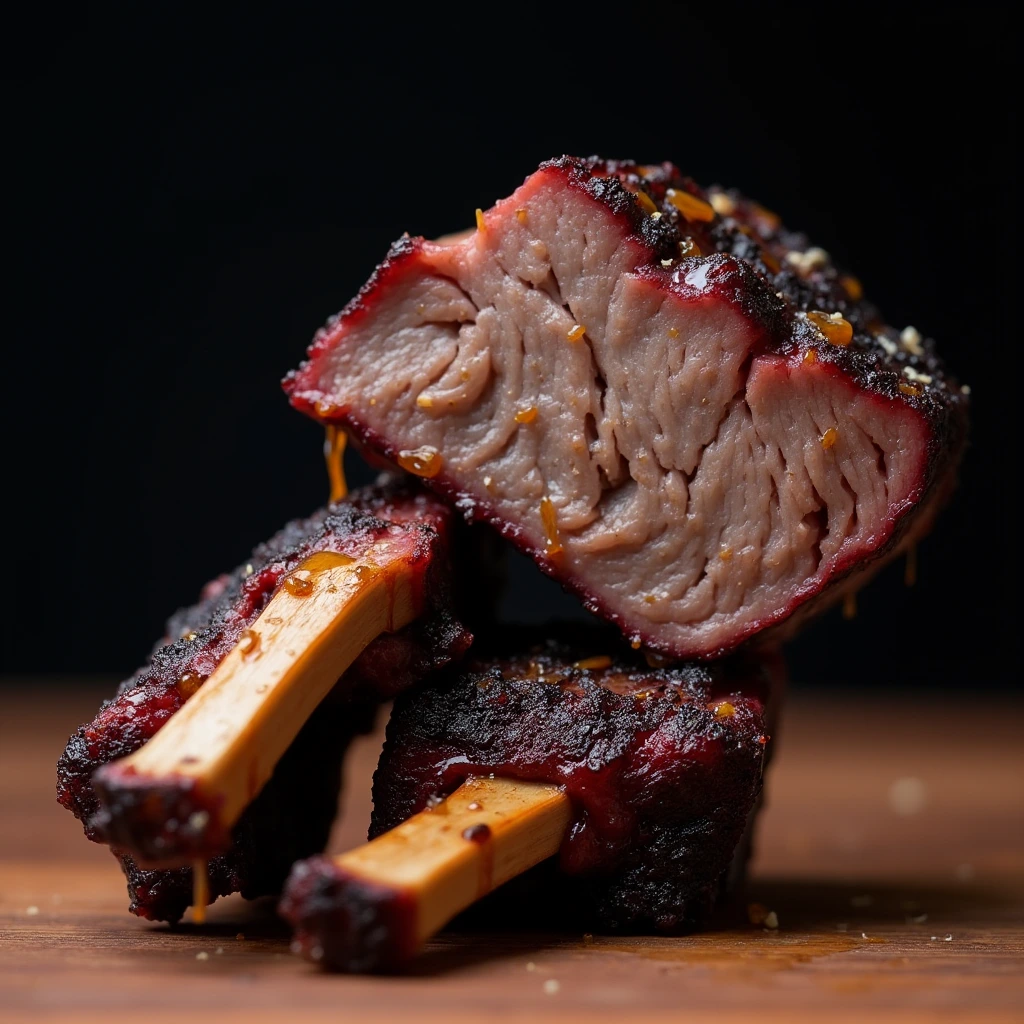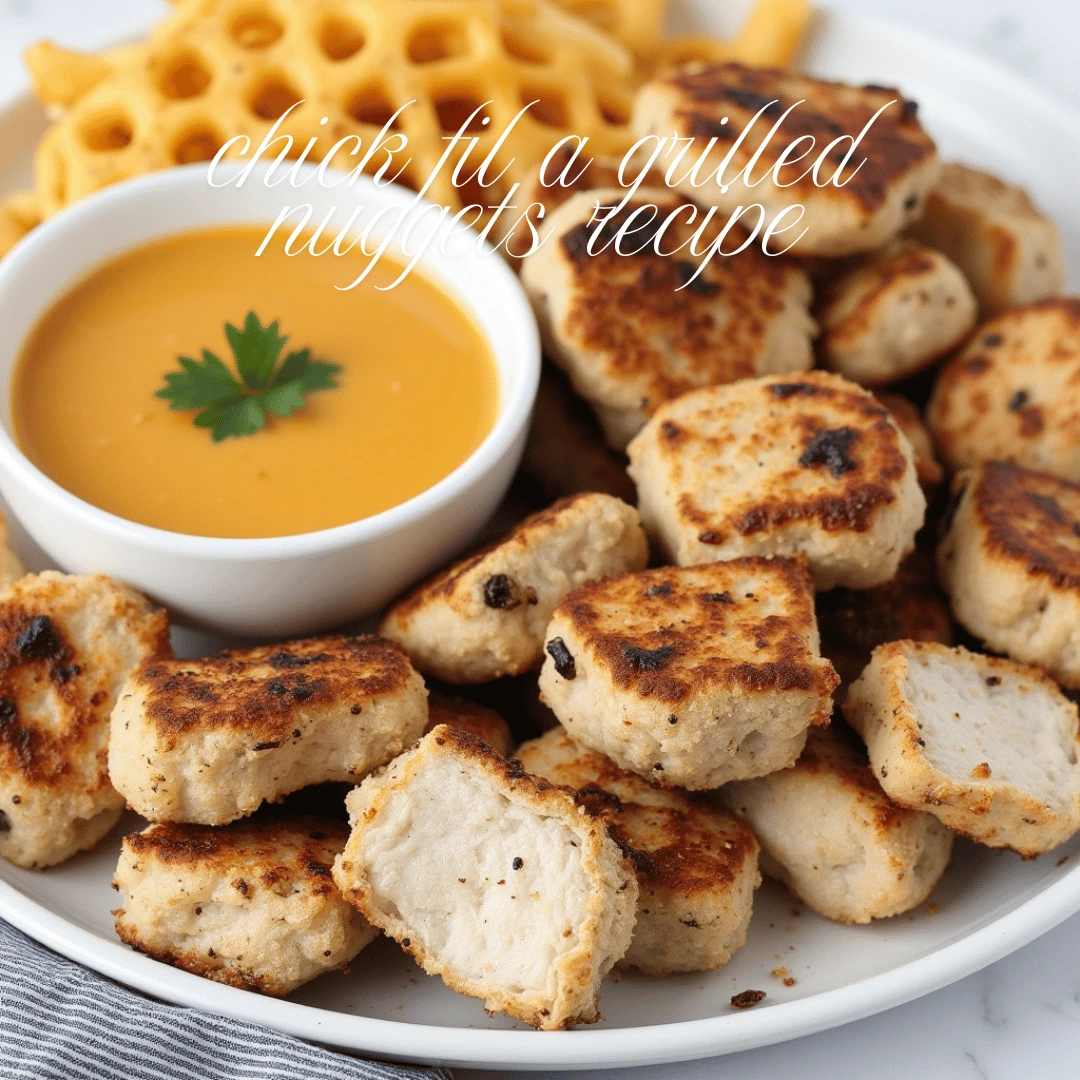The Ultimate Guide to Foolproof Smoked Beef Short Ribs Recipe (Dino Ribs)
Picture this: beautifully smoked beef short ribs with a dark, crusty bark giving way to tender, juicy meat that practically melts in your mouth. That distinctive pink smoke ring, the rich beefy flavor enhanced by hours of low and slow cooking—this is barbecue perfection that many aspire to but find challenging to achieve with traditional beef short ribs recipes.
Good news: this perfect smoked beef short ribs recipe is within your reach. In this comprehensive guide, I’ll walk you through every step of smoking beef short ribs (often called “dinosaur ribs” or “dino ribs” because of their massive size). After testing dozens of smoked beef short ribs recipe variations and cooking countless racks, I’ve developed a foolproof approach that addresses common pitfalls like the dreaded beef short ribs stall, tough meat, and lackluster bark.
Table of Contents
Why You’ll Love THIS Smoked Beef Short Ribs Recipe

- Foolproof process with clear instructions for both beginners and experienced pitmasters seeking the perfect smoked beef short ribs recipe
- Explains the “why” behind each step so you understand the science of smoking beef ribs
- Delivers consistent results every time, regardless of your smoker type
- Incredible depth of flavor with minimal ingredients (letting the beef shine)
- Solutions to common problems like tough meat, the beef short ribs stall, and bark formation
- Detailed guidance on trimming beef short ribs for optimal results
Understanding Beef Short Ribs: Plate vs. Chuck
Before diving into cooking, it’s important to know what you’re working with. Beef short ribs come primarily from two sections of the cow:
Plate Short Ribs (aka “Dino Ribs”): These come from the lower chest/belly area of the cow, behind the brisket. They’re characterized by their long bones (typically 6-8 inches) with generous meat on top. Usually sold in 3 or 4-bone sections, these are the preferred cut for classic Texas-style barbecue short ribs.
Chuck Short Ribs: From the shoulder area, these ribs are smaller, with meat that sits between shorter bones. While they’re delicious, they cook faster and don’t provide that impressive “dinosaur bone” presentation.
When seeking the ultimate smoked beef short ribs recipe, ask your butcher specifically for “plate short ribs” or “beef plate ribs” (sometimes labeled as NAMP 123A). Mention you’re looking for the large dinosaur-style ribs for smoking, and they’ll know exactly what you need.
Essential Ingredients

For the Ribs:
- Beef Plate Short Ribs – Look for a 3-4 bone section weighing approximately 4-6 pounds. Choose Choice grade at minimum, though Prime will give you better marbling and tenderness.
- Binder (optional): Yellow mustard, olive oil, or even water can help your rub adhere. The truth is, the moisture naturally present on the meat surface is often sufficient.
For the Simple & Effective Rub:
- Coarse Black Pepper – 2 tablespoons (freshly cracked is best)
- Kosher Salt – 2 tablespoons (Diamond Crystal or adjust accordingly for other brands)
- Garlic Powder – 1 tablespoon (optional, but adds a nice depth)
While there are countless complex rub recipes out there, Texas-style smoking traditions favor letting the beef and smoke flavors take center stage. This simple salt and pepper approach (often called “Dalmatian rub”) creates a beautiful bark and complements rather than masks the natural beef flavor.
Equipment Needed
- Smoker – Any type works (offset, pellet, kettle, electric, or propane)
- Wood Chunks/Chips – Oak, hickory, or pecan (more on this below)
- Instant-Read Thermometer – Essential for perfect results
- Butcher Paper or Heavy-Duty Aluminum Foil – For wrapping (optional but helpful)
- Spray Bottle – For spritzing (optional)
- Sharp Knife – For trimming and slicing
- Cutting Board – Large enough to work with the ribs comfortably
- Heat-Resistant Gloves – For handling hot meat
Choosing the Right Wood for Smoking
The wood you choose significantly impacts the flavor profile of your smoked beef short ribs. Here are the best options:
- Oak: The gold standard for beef, providing a medium-strong flavor that’s clean and doesn’t overpower the meat
- Hickory: Stronger than oak with a more pronounced bacon-like flavor
- Pecan: Slightly milder than hickory with a subtle sweetness
- Mesquite: Robust flavor (use sparingly or mixed with oak)
- Fruitwoods (apple, cherry): Milder options that add a subtle sweetness
My personal preference is a mix of oak (for the foundation) with a small amount of hickory or pecan for added complexity. If using a pellet smoker, look for blended pellets specifically designed for beef.
Step-by-Step: Smoking Beef Short Ribs to Perfection
1. Prep the Ribs: Proper Trimming for Perfect Results
When preparing your smoked beef short ribs recipe, proper trimming is essential:
- Trimming beef short ribs: Remove excess hard fat cap from the top, leaving about ¼ inch for flavor and protection. The goal when trimming beef short ribs is to achieve an even fat layer across the surface that will render beautifully during the long smoke.
- Remove the membrane: For plate ribs, there’s often a thick silver skin on the bone side. When trimming beef short ribs properly, slide a butter knife under this membrane to loosen, then grab with a paper towel and pull it off. This improves smoke penetration and enhances the eating experience.
- Apply binder (optional): If using, lightly coat all surfaces with your chosen binder after trimming beef short ribs.
- Apply the rub: Generously season all sides with your salt and pepper mixture. Don’t be shy—the meat needs good coverage for proper bark formation in your smoked beef short ribs recipe.
Pro tip: While you can apply the rub just before smoking, allowing it to sit for 1-2 hours or even overnight in the refrigerator (like a dry brine) can enhance flavor penetration and moisture retention.
2. Set Up Your Smoker
- Preheat your smoker to 250-275°F (121-135°C). This temperature range balances proper smoke absorption, bark formation, and cooking efficiency. Going too low (225°F) unnecessarily extends the cook time, while going too high risks drying out the meat.
- Add your wood chunks/chips according to your smoker’s specifications. Aim for clean, blue smoke—thin, almost transparent—rather than thick white billowing smoke, which can create bitter flavors.
- A water pan can help stabilize temperature and add humidity to the cooking environment. It’s especially useful in offset smokers or kettle setups, but less necessary in pellet smokers, which tend to retain moisture well.
3. Smoking the Ribs (The Long Haul)
- Place the ribs on the smoker bone-side down to protect the meat during the long cook.
- Estimated cooking time: 6-10 hours total, depending on size, but remember that cooking to temperature and feel, not time, is what matters.
- Spritzing (optional): After the first 2-3 hours, when bark begins forming, you can spritz every 45-60 minutes with a 50/50 mix of apple cider vinegar and water. This helps prevent the surface from drying out and adds a subtle flavor layer.
- Temperature monitoring: Insert your meat probe into the thickest part of the meat, avoiding touching the bone or fat pocket,s which give false readings.
4. The Beef Short Ribs Stall & The Wrap Decision (Understanding the Science)
Around 150-165°F internal temperature, you’ll likely encounter “the beef short ribs stall”—a frustrating period where the temperature stops rising despite continued cooking. This occurs because moisture evaporating from the meat’s surface creates a cooling effect that counteracts the heat. The beef short ribs stall is completely normal in any smoked beef short ribs recipe and can last several hours with large plate ribs.
Understanding the Beef Short Ribs Stall: During this phase, your ribs might sit at the same temperature for 2-4 hours while collagen slowly converts to gelatin. Patience during the beef short ribs stall leads to that perfect texture in your final smoked beef short ribs.
To Wrap or Not To Wrap?
- Wrapping Pros: Speeds up the cook by 1-2 hours by pushing through the beef short ribs stall faster, retains more moisture
- Wrapping Cons: Softens the bark, slightly less smoke flavor in your smoked beef short ribs recipe
If choosing to wrap:
- Wait until the internal temperature reaches 165-175°F and the bark has set nicely (usually 5-7 hours into cooking).
- Butcher paper preserves more bark texture while still speeding up cooking through the beef short ribs stall.
- Aluminum foil creates the most tender results but sacrifices some bark quality.
- Wrap tightly and return to the smoker.
5. Finishing the Cook (Probe Tender is Key!)
Continue smoking until the internal temperature reaches approximately 203-210°F (95-99°C), but temperature alone doesn’t determine doneness with beef short ribs.
CRITICAL STEP: Test for tenderness by inserting a probe or toothpick between the bones into the meat. It should slide in with minimal resistance, similar to probing warm butter. If you feel resistance, continue cooking regardless of the temperature reading.
Check multiple spots, as different areas might cook at different rates. When all areas are probed tender, your ribs are done.
6. The Crucial Rest (Don’t Skip This!)
Proper resting might be the most overlooked yet critical step in a perfect smoked beef short ribs recipe. During this time, the internal moisture redistributes throughout the meat rather than rushing out when cut.
- Remove ribs from the smoker and loosely tent with foil if unwrapped (or leave in the wrap).
- For best results, wrap in a towel and place in a cooler (without ice) to insulate.
- Rest for a minimum of 1 hour, though 2+ hours yields even better results without any loss of quality. A longer rest often improves texture.
This extended rest also gives you flexibility with timing your meal—ribs can rest in a cooler for up to 4 hours while staying food-safe and perfectly warm.
7. Slicing and Serving (The Grand Finale)
- After resting, carefully unwrap your beef short ribs.
- Slice between the bones to separate individual ribs (you can trim off any remaining hard fat at this point).
- For extra presentation points, stand the ribs up vertically to showcase that beautiful smoke ring and juicy meat.
Beef short ribs are rich and flavorful enough to serve unadorned, but can also be enhanced with:
- A light brush of good-quality barbecue sauce
- Served in a sandwich with pickled onions and coleslaw
- Chopped and used in tacos with fresh lime and cilantro



Pro Tips for Success
- Start with quality meat: The grade of beef matters significantly—Choice or Prime will give you better marbling and tenderness.
- Don’t rush the process: The “low and slow” method exists for a reason—it properly breaks down tough collagen into gelatin.
- Trust the probe feel over exact time/temp: Temperature is just a guide; tenderness is the true indicator of doneness.
- Use a coarse rub: Finely ground pepper burns more easily and doesn’t create as good a bark.
- Master your smoker’s temperature control: Learn your equipment’s hot spots and how to maintain steady temperatures.
- Resting isn’t optional: It’s as important as any other step in achieving perfect texture.
Common Problems & Troubleshooting
Ribs Too Tough?
Most likely undercooked. Beef short ribs have lots of connective tissue that must fully break down, which only happens with sufficient time at a temperature. If they’re tough, wrap them back up and continue cooking until they are tender.
Ribs Too Dry?
Possible causes:
- The cooking temperature is too high
- Insufficient marbling in the meat (too lean)
- Wrapped too late or not at all
- Insufficient resting time
Bark Not Dark/Set?
- The smoking temperature may be too low
- Not enough rub applied
- Wrapped too early before the bark had a chance to form
- Too much spritzing (diluting the rub)
Stall Taking Forever?
The stall can last 2-4 hours with beef short ribs. Your options:
- Be patient (preferred for maximum flavor and texture)
- Wrap to push through the stall faster
- Increase smoker temperature slightly (to 275-285°F)
Frequently Asked Questions About Smoked Beef Short Ribs Recipe
What internal temperature are beef short ribs done at in a smoked beef short ribs recipe?
In an authentic smoked beef short ribs recipe, the ribs are typically done between 203-210°F (95-99°C), but the probe test for tenderness is more important than the exact temperature. They should feel like probing warm butter when properly cooked.
How long does it take to smoke beef short ribs at 275°F?
When following this smoked beef short ribs recipe at 275°F, beef short ribs typically take 6-8 hours total, but this varies based on size, meat quality, and whether you wrap during the beef short ribs stall. Always cook to tenderness, not time.
Should I wrap my beef short ribs during the stall? Foil or butcher paper?
When cooking your smoked beef short ribs recipe, wrapping is optional. For maximum bark, don’t wrap during the beef short ribs stall. For faster cooking and more moisture, wrap in butcher paper (moderate bark retention) or foil (maximum tenderness but less bark).
Can I smoke beef short ribs overnight using this recipe?
Yes! When preparing this smoked beef short ribs recipe overnight, start in the evening at a lower temperature (225-235°F), and they’ll be ready for their rest the next morning. Use a reliable remote thermometer to monitor progress through the beef short ribs stall.
What’s the difference between plate ribs and chuck short ribs when trimming beef short ribs?
When selecting cuts for your smoked beef short ribs recipe, understand that plate ribs (dinosaur ribs) come from the belly area with longer bones and more meat on top, perfect for smoking. Chuck short ribs are from the shoulder region, smaller with meat between bones, and require different trimming than beef short ribs. They also cook faster than pork ribs.
Mastering Your Smoked Beef Short Ribs Recipe
Smoked beef short ribs represent the pinnacle of barbecue craftsmanship. While they require patience (especially during the beef short ribs stall) and attention to detail when trimming beef short ribs, this comprehensive smoked beef short ribs recipe provides all the guidance you need to achieve spectacular results. Remember that each cook is a learning experience—take notes on what works for your specific equipment and preferences.
The reward for your efforts? Incredibly tender, flavorful meat with a beautiful smoke ring and perfect bark that will have everyone asking for your smoked beef short ribs recipe. The combination of properly trimming beef short ribs, patience during the beef short ribs stall, and following this tested smoked beef short ribs recipe will elevate your barbecue game to professional levels.
Happy smoking, and enjoy your perfectly smoked beef short ribs!
We are interested in your opinion.
There are no reviews yet. Be the first one to write one.





